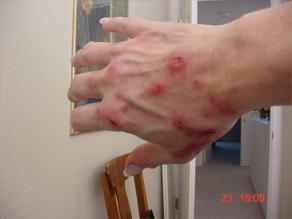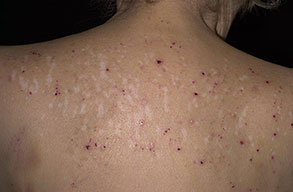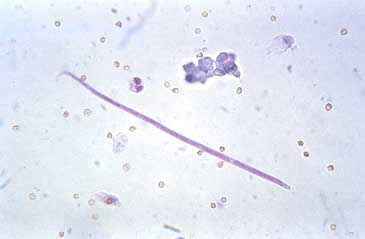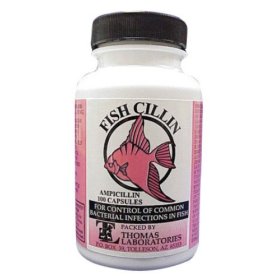There have been a couple of Morgellons articles in British publications recently, one in New Scientist (subscription required):
And another in the Daily Mail/London Evening Standard, from their “This is London” web site:
http://www.thisislondon.co.uk/news/article-23412621-details/M/article.do
The latter article illustrates many problems endemic in the “Morgellons” media phenomenon – a mixture of superficial reporting, and blatant contradictions.
Firstly, they start out on the wrong foot by describing Morgellons as:
The symptoms sound like something from The X Files – sufferers complain of a crawling sensation all over the body, egg-like lumps under the skin and, even more bizarrely, cuts which produce tiny red and blue fibres.
“egg-like lumps” suggests egg sized lumps, which is not a symptom, and nobody would describe their sores as “cuts”, so already the reader has totally the wrong idea as to what we are discussing.
 Then we get this photo of the hand of someone who claims to have Morgellons. This is an interesting link to the quackery surrounding Morgellons. Now I’m not sure who they got this photo from, but I first saw it over a year ago when Russell Altman emailed it to me (this is the original photo, the one of the article is cropped and enhanced slightly). It was taken March 21, 2006 and is the hand of “Connie“, someone that Russell claims he cured with the quack remedy “NutraSilver“, which he also conveniently sells. There is a lot of selling of remedies for Morgellons.
Then we get this photo of the hand of someone who claims to have Morgellons. This is an interesting link to the quackery surrounding Morgellons. Now I’m not sure who they got this photo from, but I first saw it over a year ago when Russell Altman emailed it to me (this is the original photo, the one of the article is cropped and enhanced slightly). It was taken March 21, 2006 and is the hand of “Connie“, someone that Russell claims he cured with the quack remedy “NutraSilver“, which he also conveniently sells. There is a lot of selling of remedies for Morgellons.
Then we get the patient, Beverly Warren, 63, from Manchester, who says “It feels like tiny insects crawling of biting under my skin“, and later “I scratch and scratch, bit it doesn’t help“, and the article then notes “Beverley’s arms are covered with dozen of sores“.
 Just like Beverly, many people who have Morgellons have no problem describing how the scratch for hours, or even how they spend hours picking at their skin. Yet somehow, as in this article, the connection is not made that the scratching and the picking as actually causing the sores and the lesions. It’s called Neurotic Excoriations, and looks like the photo on the right:
Just like Beverly, many people who have Morgellons have no problem describing how the scratch for hours, or even how they spend hours picking at their skin. Yet somehow, as in this article, the connection is not made that the scratching and the picking as actually causing the sores and the lesions. It’s called Neurotic Excoriations, and looks like the photo on the right:
And the sensation of insects under the skin is also well known. It’s called formication, and it’s caused by many physical conditions, including Menopause, diabetes, or reactions to prescription drugs. Formication can lead to scratching, which can damage the skin, leading to more itching and formication, which creates a vicious itch-scratch-itch cycle that can be impossible to break.
It’s quite possible that 11 years ago, Beverly, then aged 52, was going through menopause, and was suffering from formication(as 20% of menopausal women do, to some degree), she scratched, and this precipitated her current condition. But again, it could be any number of things.
Moving on, we have Rita, 47, whose symptoms started at age 43, and who illustrates the nonsense behind the claim that “According to Morgellons sufferers doctors are dismissive of their illness“:
“The doctors are very dismissive. One doctor sent the fibres off to a lab, but all she said was that nothing abnormal had been detected.” Among Morgellons sufferers, this is a common experience.
Here’s the contradiction: the doctors are “very dismissive” and yet they “sent the fibers off to a lab“. How is this dismissive? They analyzed the fibers, and found they were nothing abnormal. That sounds like they took her claims very seriously. Beverly, also, speaks of many “doctors and dermatologists”, and “two skin biopsies” – again this does not sound like she has been dismissed, in fact it seems like doctors have gone to some length to find out what is wrong with her.
The article wraps it up with some words from “a handful of experts“, without noting that they are actually not experts in dermatology, nor in fiber analysis, or epidemiology, or anything that might help them discern what is actually going on.
The real experts, dermatologists and psychologists, are not dismissive. In fact they take this problem very seriously, and have a great deal of sympathy for those who are suffering from these symptoms. Saying a condition has a psychological component is not dismissing it, it’s correctly identifying it, so it can be properly treated.
 It seems like someone at the MRF was a little over-eager to share their new theory with the world. Yesterday the MRF web site was suddenly changed from cautious suggestion that Morgellons is related to Lyme disease, to wide ranging speculation of animal worms and rare bacterial infections. These new theories are rather out of keeping with the prior tone of the MRF, and this make me wonder if a new hand is at the helm.
It seems like someone at the MRF was a little over-eager to share their new theory with the world. Yesterday the MRF web site was suddenly changed from cautious suggestion that Morgellons is related to Lyme disease, to wide ranging speculation of animal worms and rare bacterial infections. These new theories are rather out of keeping with the prior tone of the MRF, and this make me wonder if a new hand is at the helm.
